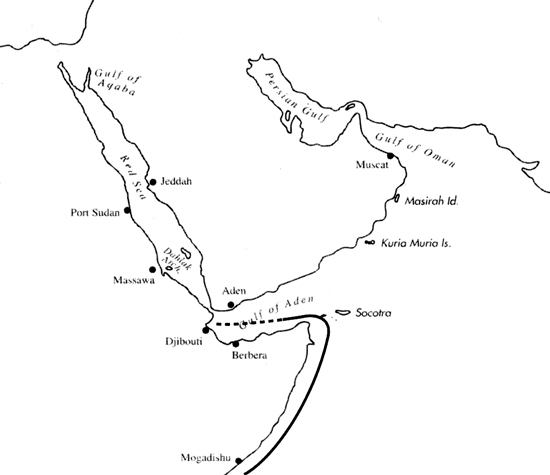
Skip Navigation Links
View access keys for this site.

Range: Gulf of Aden to Mogadishu.
Description: Very small and light. Last whorl usually conical to broadly conical: outline convex adapically, straight (right side) or concave (left side) below. Shoulder sharply angulate to carinate. Spire usually of moderate height, stepped; outline concave. Larval shell of 2.25-2.5 whorls, with fine radial ridges more prominent toward teleoconch; maximum diameter 0.8-1 mm. Teleoconch sutural ramps concave, often with 1-3 spiral grooves in early whorls; spiral sculpture obsolete in late whorls. Last whorl with spiral ribs on basal third and 1-2 weak spiral grooves just below shoulder.
| Shell Morphometry | ||
|---|---|---|
| L | 9-13 mm | |
| RW | 0.01-0.02 g/mm | |
| RD | 0.63-0.77 | |
| PMD | 0.82-0.93 | |
| RSH | 0.13-0.24 | |
Ground colour white. Last whorl with a broad, interrupted to solid, orangish to blackish brown spiral band on each side of centre, sometimes reduced or absent. Central ground-colour band with an indistinct meshwork of grey background shades, often edged with dark brown to black spots. Closely spaced dashed to solid brown spiral lines extending from base to shoulder, partially articulated with white dashes. Larval shell bicoloured: Initial part with a beige to light brown median zone and dark brown sutural areas, remaining part grading to completely dark brown. Postnuclear sutural ramps with dark brown radial streaks and blotches crossing outer margins. Aperture showing exterior colour pattern.
Periostracum yellowish grey, thin, translucent, smooth, slightly thicker and with axial ridges toward outer lip, with distinct radial ridges on the late sutural ramps.
Radular teeth long, narrow and slightly curved, with 2 opposite adapical barbs and a larger third barb posteriorly; serration and basal spur absent. Teeth similar but not completely congruent with those of piscivorous species. Radular sac contains about 150 teeth, while small vermivorous species have about 80-90 teeth and piscivorous species even less (Rolán & G. Raybaudi Massilia, in press).
Habitat and Habits: In 50-150 m (G. Raybaudi Massilia, in press).
Discussion: C. korni is very similar to C. biraghii and C. boschorum. C. biraghii biraghii often has a more ventricose last whorl (PMD 0.77-0.91), its spire outline is straight rather than concave, and its early teleoconch sutural ramps lack distinct spiral sculpture; the final part of its larval shell is light coloured. C. biraghii omanensis differs in its higher spire (RSH 0.23-0.30), angulate rather than sharply angulate to carinate shoulder, and the distinct spiral grooves on its flat rather than concave late sutural ramps; its larval shell is more contrastingly bicoloured. C. biraghii congruens also has a higher spire (RSH 0.24-0.30) and a more contrastingly bicoloured larval shell; its shoulder is often undulate due to traces of axial subshoulder costae. We provisionally accept the status as valid species. For comparison between C. korni and C. boschorum, see the Discussion of the latter species. For the distinctions from the holotype of C. traillii and the relationship to C. locumtenens, see the Discussion of C. biraghii.

C. korni range map
This section contains verbatim reproductions of the accounts of 316 species of Conus from the Indo-Pacific region, from Manual of the Living Conidae, by Röckel, Korn and Kohn (1995). They are reproduced with the kind permission of the present publisher, Conchbooks.
All plates and figures referred to in the text are also in Röckel, Korn & Kohn, 1995. Manual of the Living Conidae Vol. 1: Indo-Pacific Region.
The range maps have been modified so that each species account has it own map, rather than one map that showed the ranges of several species in the original work. This was necessary because each species account is on a separate page on the website and not confined to the order of accounts in the book.
Return to framed version (returns to search page)